Recently, research group of Prof. Panchao Yin, South China Advanced Institute of Soft Matter Science and Technology, South China University of Technology, has published papers onauthoritative journals include Journal of Physical Chemistry C, Chemical Communications, Macromolecules, ACS Applied Materials & Interfaces,and content refer to“Sub-nanoscaled Metal Oxide Cluster-Integrated Polymer Network for Quasi-Homogeneous Catalysis”, “Confinement Effect on the Surface of a Metal–Organic Polyhedron: Tunable Thermoresponsiveness and Water Permeability etc.
01
Microstructure-property relationship of confined polymer systems based on metal organic polyhedrons
In recent years, constructing star polymers via grafting polymers on the surface of nanoparticles (NPs) has become a general strategy for adjusting and enriching the properties of nanocomposites. However, due to the lack of awell-defined star-shaped polymer nanoparticle system, it is still impossible to obtain a clear structure-property relationship for this system, and it is hard to further improve and design the structure and performance of the star-shaped polymer nanoparticle system. On the other hand, the high graft density confines the polymer molecules on the surface of NPs in an extremely restricted state, and this confined state will significantly affect the dynamic behavior of the polymer molecules. The motion mechanism of this restricted molecules still needs to be explored urgently. However, due to the wide distribution of NPs-polymer composite systems, and the unascertained surface structure and polymer grafting density of NPs, it is difficult to obtain effective and convincing conclusions.
In order to make a progress on the problem mentioned above, firstly, NPs with a monodisperse size and well-defined structure are needed. Metal-organic polyhedron (MOP) is a kind of nano-scale cage-like molecular clusters formed by coordination between metal ions and multidentate ligands, which are an appropriate choice for the required NPs. Compared with conventional NPs, MOP is in monodispersed size, with well-defined and modifiable surface structure, which provides great convenience for preparing required star-shaped MOP nanocomposites.
Therefore, research group of professor Yin Panchao, South China Advanced Institute of Soft Matter Science and Technology, South China University of Technology,selected Cu-MOP, formed by coordination of isophthalic acid and its derivatives with divalent copper ions, as the core nanoparticles. Specially, monodisperse polystyrene obtained via anionic polymerization was modified with isophthalic acid end group and further coordinated with divalent copper ions to prepare a 24 arms star-like polystyrene-MOP composite system (PS-MOP) with a monodispersed nanocomposite. Gel chromatography (GPC), Dynamic Light Scattering (DLS) confirm its monodispersed structure. Based on the distance between MOPs obtained in the small-angle X-ray scattering (SAXS) result of the PS-MOP bulk and the scaling theory in polymer physics, the confined domains in the PS-MOP is confirmed. SAXS and small-angle neutron scattering (SANS) data of the PS-MOP solution also demonstrate a typical core-shell characteristic, while the SANS results reveal on the surface of the MOP, polymer adopt a relatively densely packed mode. Furthermore, DSC data and rheological data show that when the polymer ligand Mn is lower than 3.3k, confinement effect dominates the storage modulus and glass transition temperature, which is manifested by the increase in storage modulus and glass transition temperature compared to their counterpart linear polymer. Under the guidance of the structure-property relationship revealed in the above research, PS-PI (polyisoprene, PI, polyisoprene) ligand with isophthalic acid terminal was designed to construct the first MOP thermoplastic elastomer, and proved its application in gas separation membranes.
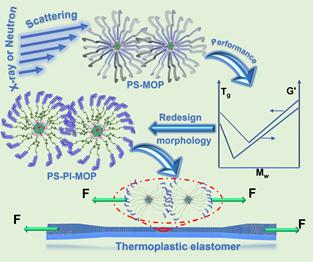
Figure 1. Under the guidance of the structure-property relationship, the first MOP thermoplastic elastomer was obtained by designing the polymer composition and its application in gas separation membranes was proved
Furthermore, the team used the MOP formed by the coordination of isophthalic acid covalently modified with an alkyl chain and copper ions to studied the MOP structure in solution and at gas-liquid interface. From the analysis of small-angle scattering data, it is found that the structure of MOP remains intact in the solution state, while the grafted alkyl chain adopts an extended conformation, so that solvent molecules can penetrate the outer layer and enter the cavity in the MOP. From in-situ neutron reflection experiment, it was found that the star-shaped MOP structure can be deformed when apply pressure on the gas-liquid interface. The MOP cores are very close to each other, while the grafted chains are squeezed and extending up towards and down towards. This is also the first direct evidence for the hypothesis of ion channel state in previous literature.
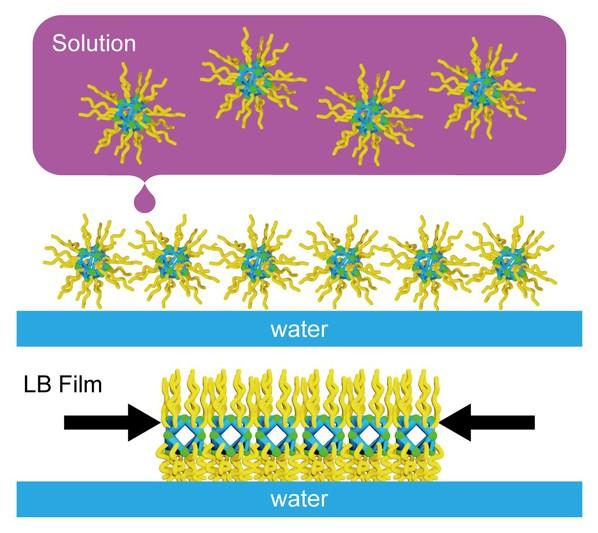
Figure 2. Schematic diagram of the structure and arrangement of the MOP with alkyl linkages at the gas-liquid interface
On the basis of previous work, Professor Yin 's team studied the space confinement effect on the 24 poly(N-isopropylacrylamide) (PNiPAM) chains densely grafted onto the surface of MOP. The spherical surface of MOP brings unique confinement environment to grafted PNiPAM: the inner part of the PNiPAM chains is in a super-constrained state, while the outer part is almost unconstrained. Small-angle neutron scattering studies show that the PNiPAM chains grafted on MOP adopt more straight and rigid conformation than the free PNiPAM chain. At the same time, further analysis shows that the solvent composition inside the hollow MOP core retained composite as the solvent used in preparation and it is different from the deuterated solvent used in the SANS experiments, which indicates that solvent exchange cannot happen between external solvent and the internal solvent located in hollow MOP. The SLD (scattering length density) obtained in fitting SANS results shows that the decreases distribution of external deuterated water in the polymer layer of PNiPAM-MOP from the outside to the inside, which indicates that the outer polymer of PNiPAM-MOP remains hydrated and makes the nanocomposite can be dissolved in an aqueous solution, while the inner polymer prevents water from penetrating into the MOP area and improves the stability of the MOP in water. In addition, this restriction further affects the thermal responsiveness of PNiPAM-MOP in solution, and improves its efficiency in controlling the separation and release of small molecules.
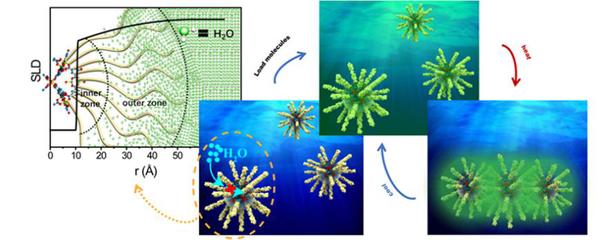
Figure 3. The outer polymer of PNiPAM-MOP remains hydrated, while the inner polymer prevents water from penetrating into the MOP area and improves the stability of the MOP in water. In addition, this restriction further affects the thermal responsiveness of PNiPAM-MOP in solution, and improves its efficiency in controlling the separation and release of small molecules.
All above results were published in Angew. Chem. Int. Ed. (. Angew. Chem. Int. Ed., 2019, 58, 17412-17417), J. Phys. Chem. C (J. Phys. Chem. C 2020, 124, 15656-15662) and Macromolecules (Macromolecules 2020, ASAP, DOI: 10.1021/acs.macromol.0c00295).
Paper link:
https://onlinelibrary.wiley.com/doi/full/10.1002/pc.25370
https://pubs.acs.org/doi/10.1021/acs.jpcc.0c05544
https://pubs.acs.org/doi/10.1021/acs.macromol.0c00295
02
Efficient and stable quasi-homogeneous catalytic system and long-term antibacterial system based on metal oxygen cluster integrated polymer network
Polymer nanocomposites (PNCs) have been under intense developing for decades for the possible synergies between polymers and nanoparticles, providing great opportunities for the improvement of the characteristic performances of the individual components and the birth of novel functionalities, which has been applied in many fields.Due to the high compatibility with various solvents media, the synergistic improvement of catalytic activity and recyclability of nanoparticles has attracted more and more attention in the field of PNCs.However, the catalytic performances of PNCs usually suffer from long-term stability and the leaching of nanoparticles in reactionsbecause of either the high solubility of PNCs in reaction solutions or the comparatively weak interaction among nanoparticles and polymer matrices. Therefore, the synergistic improvement of high-efficiency, stable catalytic performance and recyclability of polymer nanocomposites has attracted more and more attention. Design of PNCs with nanoparticles covalently bonded to polymer network without interfering their access and compatibilities to reaction media is key to the future development of PNC catalysts.
Metal oxide clusters, a group of mono-dispersed nanoparticles with well-defined structures and independent functionalities, have been recently recognized as ‘nanoatoms’ for the concept of materials by design because of their dual roles in structural construction and functionality integration. In addition, metal oxide clusters exhibit excellent catalytic performance, due to the unique electronic structure of the central metal atom. Those advantages of mental oxide clusters provide perfect solution for above problems.
Recently, research group of professor Yin Panchao, South China Advanced Institute of Soft Matter Science and Technology, South China University of Technology, integrated sub-nanometer metal oxygen clusters (hexavanadate metal oxygen clusters, 0.7 nm) into the polymer network through covalent bonds to obtain polymer nanocomposites with superelastic properties (ACS Appl. Mater. Interfaces 2020, ASAP,DOI:10.1021/acsami.0c09666). Due to the ultra-small sizes of loaded clusters and the high swelling ratios of PNCs, the swelled organo-gels from PNCs claim similar catalytic efficiencies with homogeneous catalysts while their recyclability can be simple achieved after the catalytic reactions. Thanks to their robust mechanical property, the PNCs can be processed into microgel particles for column reactors, enabling large-scale and continuous flowing catalysis. Meanwhile, the research group obtained a membrane material with long-lasting antibacterial function by loading metal oxide clusters containing silver ions on a polyvinyl alcohol polymer substrate. (Chem. Commun., 2020,56, 5287-5290, DOI:10.1039/D0CC01676D)

Figure 1:Schematic diagram of the structure and function of PMCCs
Robust mechanical properties:The polymer metal oxide cluster nanocomposites (PMCCs) inherit high elasticity from the polymer network and enhanced modulus from the strengthen effect of incorporated hexavanadate metal oxygen clusters. All the PMCCs are ultra-stretchable with higher fracture strain than 1100%, which is comparable to regular super-elastomers. Especially, the PMCCs-75% nBA shows a tensile fracture strain of 1600% (Figure 2a).PMCCs show higher modulus, fracture stress and toughness than the corresponding pure polymer network (Figure 2b and c). This excellent performance is originated from the fine and uniform dispersion of hexavanadate metal oxygen clusters as molecular structural units in the three-dimensional network, which not only increases overall materials’ modulus but also facilitate the dispersion of local stress concentration.
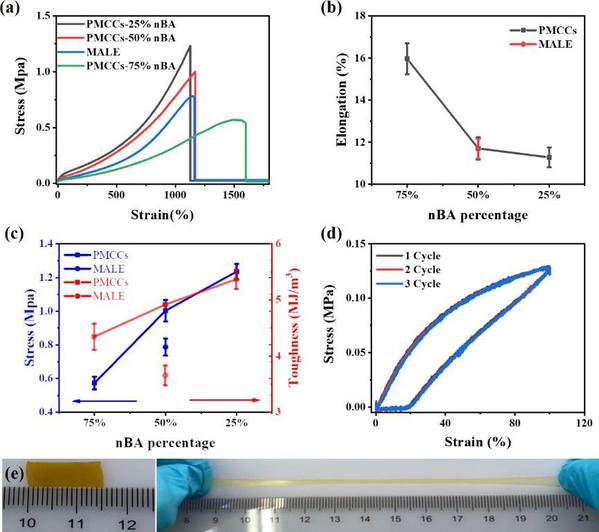
Figure 2:Mechanical properties of PMCCs
Quasi-homogeneous catalytic activity:PMCCs demonstrate outstanding capability in solution trapping as organo-gels for highly efficient quasi-homogeneous catalysis. Swelling ratios in acetonitrile are applied to quantitatively evaluate the capacity of PMCCs in trapping reaction solutions. Since hexavanadate metal oxygen clusters are molecularly distributed in PMCCs and the swelled organo-gels, Swelling ratios also reflect the solvent accessibility to the surface of hexavanadate metal oxygen clusters. The high swelling ratio of polymer nanocomposites provides the requirements for quasi-homogeneous catalysis (Figure 3 a, b, c). The PMCCs exhibits high catalytic efficiency under swelling conditions, which is comparable to the homogeneous catalytic efficiency of a single hexavanadate metal oxygen cluster, and has good catalytic stability and cycle catalytic performance.

Figure 3: Quasi-homogeneous catalytic performance of PMCCs.
Continuous flowing catalytic system: PMCCs can be further processed into microgel particles for continuous flowing reactions in column reactors to extend the feasibility of their practical applications. Due to higher heat- and mass-transfer and convenient operation characteristics, the continuous flowing column reactor technology shows great potential in chemical synthesis for safety issues, precise and automatic control, and intensification of chemical reactions in both industry process and the lab.
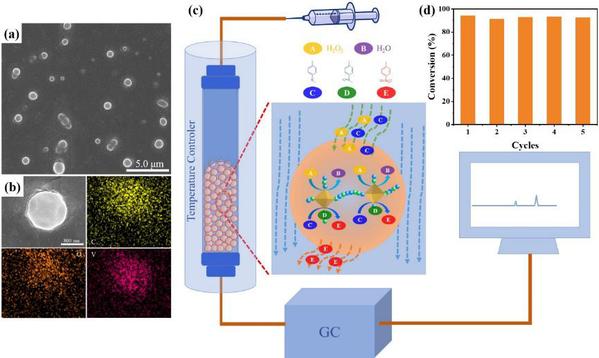
Figure 4: Microgel continuous flowing catalytic system performance
In another antibacterial research base on the Preyssler-type POM structure, which are known as the smallest POMs having a cation-containable cavity. In this study, a silver-containing polyoxometalates K13Na [AgP5W30O110] are explored to control the release of silver with activation mechanism. Nuclear magnetic resonance was used to monitor the release behavior of Ag+ in the experiment. AgP5W30 is stable in aqueous solution with the presence of transferrin and common metal ions that are rich in biological fluids, but releases Ag+ based on the ions exchange between Ag+ and Na+. The release rate of Ag+ is close to 100% when the molar ratio of Na+ to AgP5W30 exceeds 14:1. Moreover, the ions exchange reaction shows a high degree of selectivity to Na+, rather than Ca2+ or Zn2+. In subsequent resistance tests of Escherichia coli and Staphylococcus aureus, AgP5W30 also showed good anti-resistance, and the minimum inhibitory concentrations (MICs) remained unchanged for 20 incubation cycles, while the MICs of silver nanoparticles expanded at least 5 times after 9 incubation cycles. In addition, the AgP5W30-PVA composite films were prepared by the solution casting method. When the amount of AgP5W30 was 3% (w/w), the tensile strength of the composite film increased by 26.14%, and the elongation at break decreased by 6.59%, without significant change in thermal stability and surface morphology. In the test of inhibition zone, the composite films also showed good bacteriostatic effects for both both Escherichia coli and Staphylococcus aureus. Application of silver-containing polyoxometalates provides an effective method on controlled release of silver ions to fight against bacterial resistance. Few cases realize the controlled release based on the inorganic materials, especially for release with activation mechanism, it is also the first case for polyoxometalates used in ions-controlled release.
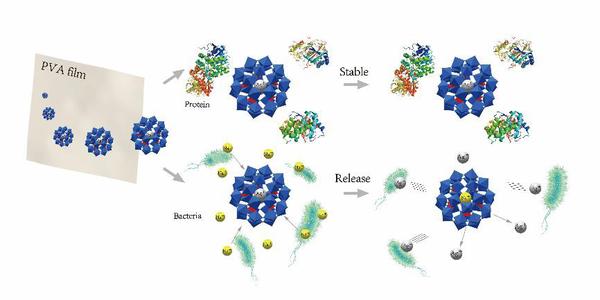
Figure 6: POM based polymer network as a selective long-acting antibacterial material.
This series work makes full use of the structural advantages, catalytic function and controllable ion release function of poly metal oxygen clusters to create a new type of catalytic network and long-term antibacterial materials.
Paper link:
https://pubs.acs.org/doi/10.1021/acsami.0c09666
https://pubs.rsc.org/en/content/articlelanding/2020/cc/d0cc01676d#!divAbstract
